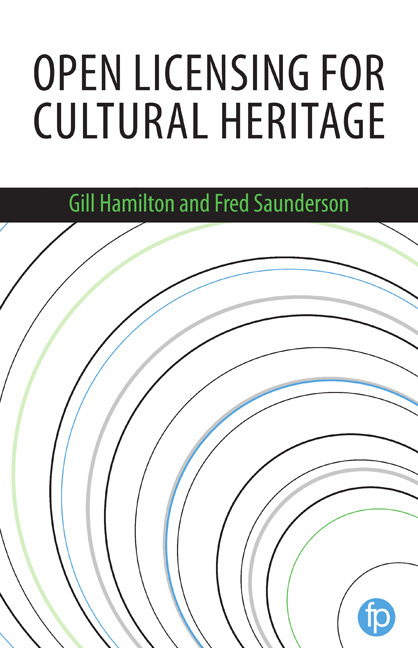Book contents
- Frontmatter
- Contents
- List of figures and tables
- Acknowledgements
- About the authors
- 1 Introduction
- 2 The open movement: its history and development
- 3 Copyright and licensing: a background
- 4 Open licensing: the logical option for cultural heritage
- Introduction to case studies
- 5 Small steps, big impact – how SMK became SMK Open
- 6 The British Library experience of open metadata licensing
- 7 Open policy and collaboration with Wikimedia at the National Library of Wales
- 8 Newcastle Libraries – the public library as a place to share culture
- 9 Developing open licensing at the National Library of Scotland
- 10 The Wellcome Library
- 11 Developing an open educational resources policy and open approaches to mitigate risk at University of Edinburgh
- 12 How to implement open licensing
- 13 Using and reusing openly licensed resources
- 14 Conclusion
- Index
5 - Small steps, big impact – how SMK became SMK Open
Published online by Cambridge University Press: 08 June 2018
- Frontmatter
- Contents
- List of figures and tables
- Acknowledgements
- About the authors
- 1 Introduction
- 2 The open movement: its history and development
- 3 Copyright and licensing: a background
- 4 Open licensing: the logical option for cultural heritage
- Introduction to case studies
- 5 Small steps, big impact – how SMK became SMK Open
- 6 The British Library experience of open metadata licensing
- 7 Open policy and collaboration with Wikimedia at the National Library of Wales
- 8 Newcastle Libraries – the public library as a place to share culture
- 9 Developing open licensing at the National Library of Scotland
- 10 The Wellcome Library
- 11 Developing an open educational resources policy and open approaches to mitigate risk at University of Edinburgh
- 12 How to implement open licensing
- 13 Using and reusing openly licensed resources
- 14 Conclusion
- Index
Summary
Starting small
Think Big. Start Small. Move Fast. (Michael Edson)
This simple piece of advice has been a key driving factor to achieve the ambition of opening up the digitised collection of Statens Museum for Kunst (National Gallery of Denmark; SMK). The advice was given to us in 2011 by Michael Edson, then Director of Web and New Media Strategy at The Smithsonian Institution. At the time, we were in the midst of a process discussing and reconsidering the image licensing policy for our online collection. Like so many other cultural heritage institutions around the world, we had extended our policy from the analogue era into the digital age. We were still charging licensing and transaction fees for use of digital images, even though, in principle, reproductions of artworks in our collection could now be distributed with zero marginal cost. And even though, in reality, most of our collection is in the public domain because of its age and therefore rightly belongs to the public. In the ‘forever business’ of cultural heritage, business as usual has a tendency to prevail.
At that particular moment, SMK had been contacted by Google staff. They wanted SMK to join their Art Project, which in its first launch had sported such notable museum collections as the Gemäldegalerie in Berlin, the Uffizi in Florence, and the Metropolitan Museum of Art in New York. It was one of those offers you cannot refuse. The invitation spurred some significant internal debates at SMK. We had been following the news of museums releasing their digitised collections using Creative Commons – from Rijksmuseum to Yale University. The digital team had been making the argument about open data, pointing to the potential of the Creative Commons system for our collection, and for a while we had internal discussions of pros and cons. But the call from Google proved to be the tipping point.
SMK is a publicly funded art museum. Google is a private company. If SMK were to join the Google Art Project, it would enter into a so-called public–private partnership, effectively handing over usage rights to digitised cultural heritage that is collectively owned and funded by the citizens of Denmark.
- Type
- Chapter
- Information
- Open Licensing for Cultural Heritage , pp. 97 - 110Publisher: FacetPrint publication year: 2017



